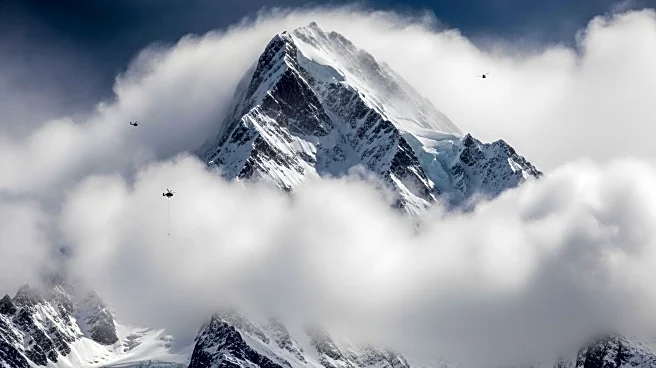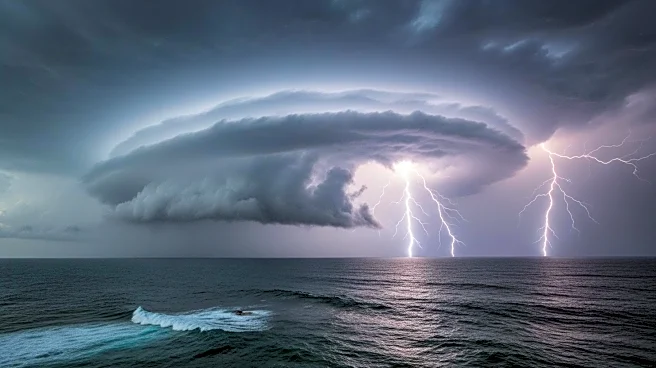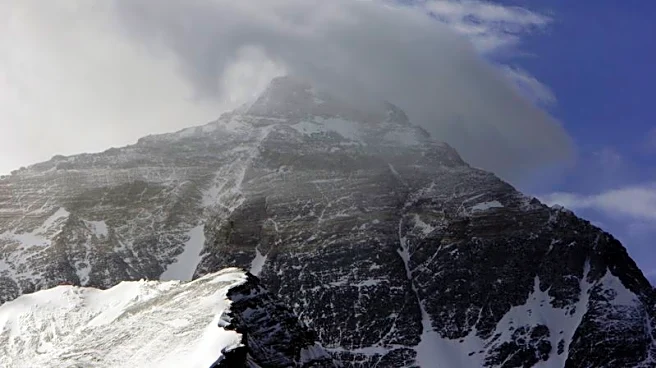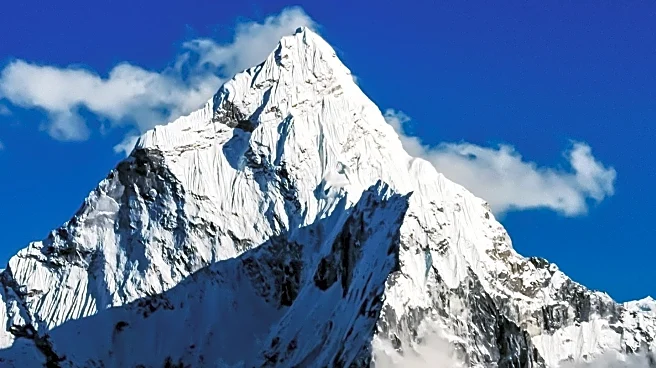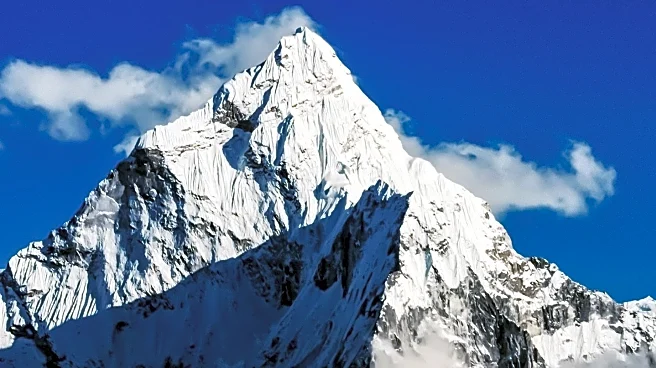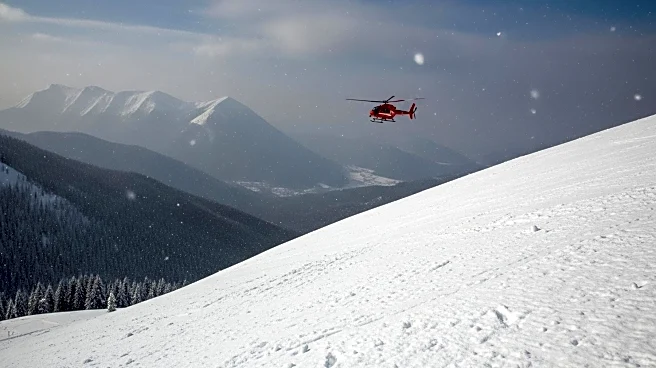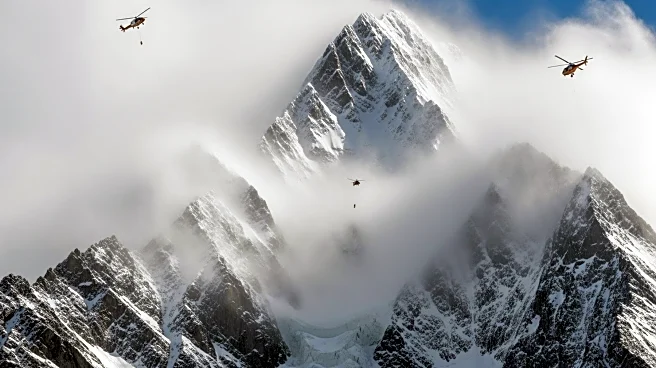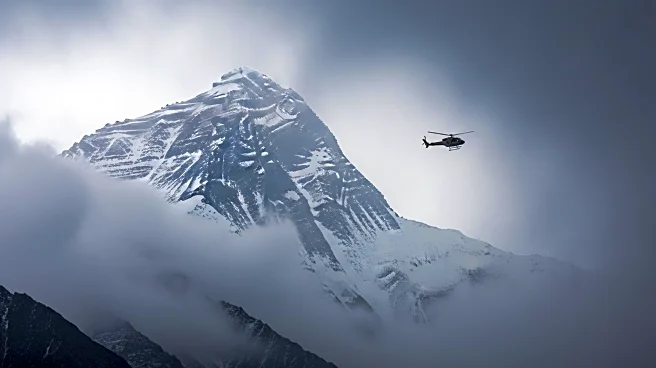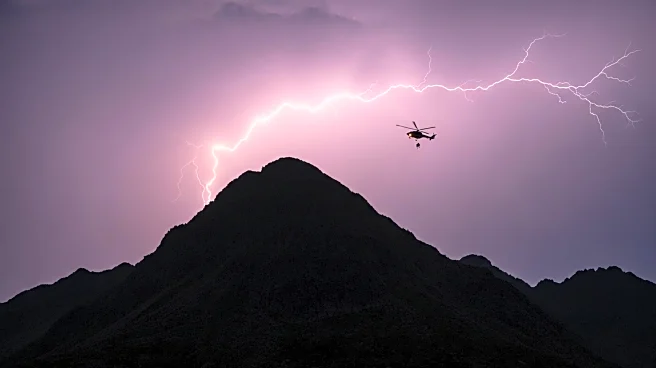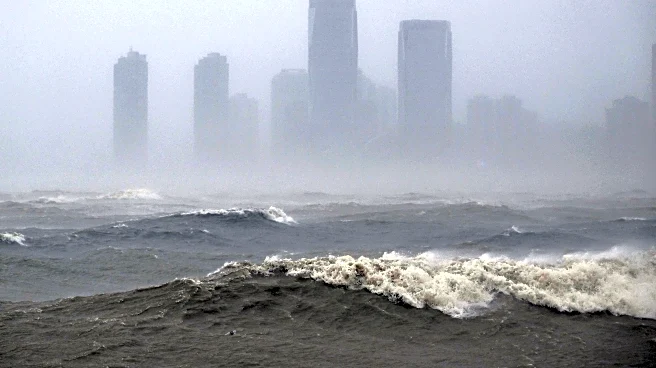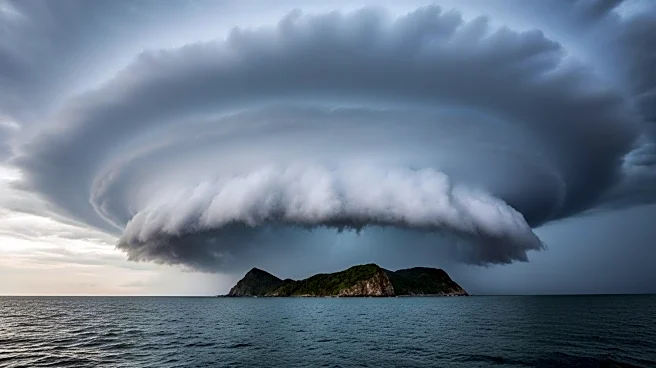What is the story about?
What's Happening?
A severe snowstorm has trapped hundreds of climbers on the Tibetan side of Mount Everest, causing significant damage to tents and blocking rescue routes. According to China Central Television (CCTV), 350 hikers have been rescued from the blizzard conditions, while contact has been established with over 200 individuals still at camp. These climbers are being evacuated to the township of Qudang in groups. The storm has affected approximately 1,000 climbers at camps located at an altitude of around 4,900 meters. Despite ongoing rescue efforts, heavy snow and winds continue to hamper progress. Local tour companies have suspended ticket sales to the area, and locals are assisting in clearing snow to unblock access to the camp. Neighboring Nepal is also experiencing severe weather, with rain causing landslides and flash flooding that have resulted in fatalities.
Why It's Important?
The situation on Mount Everest highlights the dangers associated with high-altitude climbing and the unpredictable nature of mountain weather. The rescue operations are critical to ensuring the safety of the climbers, many of whom are at risk due to the harsh conditions. This event underscores the need for improved safety measures and emergency preparedness for climbers and local authorities. The impact of the storm extends beyond the immediate rescue efforts, affecting local economies reliant on tourism and climbing expeditions. The severe weather in Nepal further complicates the situation, as resources may be stretched thin due to concurrent natural disasters.
What's Next?
Rescue operations will continue as authorities work to evacuate the remaining climbers safely. The focus will be on clearing access routes and ensuring that all individuals are accounted for. Local tour companies may reassess their safety protocols and emergency response plans in light of this incident. Additionally, the ongoing severe weather in Nepal may require international assistance and coordination to address the broader impact of the natural disasters. Stakeholders, including government agencies and tourism operators, will likely review and enhance their strategies to mitigate risks associated with climbing and extreme weather conditions.
Beyond the Headlines
This incident may lead to increased scrutiny of climbing regulations and safety standards on Mount Everest. The ethical considerations of allowing large numbers of climbers on the mountain, given the inherent risks, could be debated. Long-term, there may be discussions about sustainable tourism practices and the environmental impact of climbing expeditions. The cultural significance of Mount Everest as a symbol of human achievement and adventure may be weighed against the need for responsible and safe climbing practices.
AI Generated Content
Do you find this article useful?
